NIL
Big 12 Powers Texas, OU, and Tech Still Alive
Share Tweet Share Share Email The road to Oklahoma City is officially narrowed to 16 teams—and the Big 12 is still in the mix despite plenty of chaos in Regionals. The 2025 NCAA Division I Softball Championship has reached the Super Regionals, with eight best-of-three series set to unfold from May 22–25. Winners punch their […]

The road to Oklahoma City is officially narrowed to 16 teams—and the Big 12 is still in the mix despite plenty of chaos in Regionals.
The 2025 NCAA Division I Softball Championship has reached the Super Regionals, with eight best-of-three series set to unfold from May 22–25.
Winners punch their ticket to the Women’s College World Series, which begins May 29 in Oklahoma City. Below is a look at the updated 2025 NCAA DI softball tournament schedule.
2025 NCAA Softball Super Regional Schedule (May 22-25)
Eugene Super Regional – Eugene, Oregon
May 23 | Game 1: Liberty vs. Oregon, 10 p.m. | ESPNU
May 24 | Game 2: Oregon vs. Liberty, 7 p.m. | TV TBD
Norman Super Regional – Norman, Oklahoma
May 23 | Game 1: Alabama vs. Oklahoma, 5 p.m. | ESPN2
May 24 | Game 2: Oklahoma vs. Alabama, 3 p.m. | TV TBD
Gainesville Super Regional – Gainesville, Florida
May 23 | Game 1: Georgia vs. Florida, 11 a.m. | ESPN2
May 24 | Game 2: Florida vs. Georgia, 11 a.m. | TV TBD
Fayetteville Super Regional – Fayetteville, Arkansas
May 23 | Game 1: Ole Miss vs. Arkansas, 8 p.m. | ESPNU
May 24 | Game 2: Arkansas vs. Ole Miss, 9 p.m. | TV TBD
Tallahassee Super Regional – Tallahassee, Florida
May 22 | Game 1: Texas Tech vs. Florida State, 7 p.m. | ESPN2
May 23 | Game 2: Florida State vs. Texas Tech, 3 p.m. | ESPN2
Austin Super Regional – Austin, Texas
May 22 | Game 1: Clemson vs. Texas, 9 p.m. | ESPN2
May 23 | Game 2: Texas vs. Clemson, 9 p.m. ESPN2
Knoxville Super Regional – Knoxville, Tennessee
May 23 | Game 1: Nebraska vs. Tennessee, 7 p.m. | ESPN2
May 24 | Game 2: Tennessee vs. Nebraska, 5 p.m. | TV TBD
Columbia Super Regional – Columbia, South Carolina
May 23 | Game 1: UCLA vs. South Carolina, 1 p.m. | ESPN
May 24 | Game 2: South Carolina vs. UCLA, 1 p.m. | TV TBD
Texas Tech is the lone Big 12 team left in the field after Arizona was upset by Ole Miss in the Tucson Regional.
NIL
College sports settlement means NCAA schools can directly pay players
NCAA member schools can compensate their players across all sports beginning July 1, according to the approval issued by U.S. District Judge Claudia Wilken. Latest on NCAA settlement that would allow revenue sharing for college athletes USA TODAY Sports’ Steve Berkowitz discusses the latest on judge’s refusal to approve NCAA settlement that would allow revenue […]
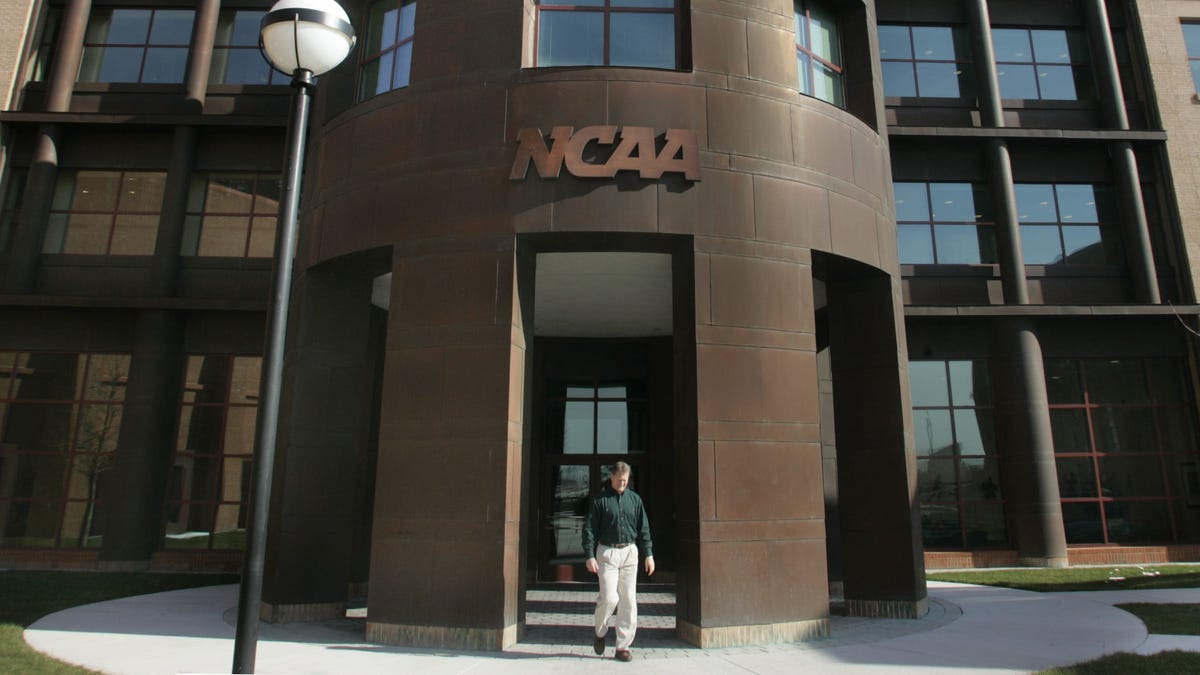
NCAA member schools can compensate their players across all sports beginning July 1, according to the approval issued by U.S. District Judge Claudia Wilken.
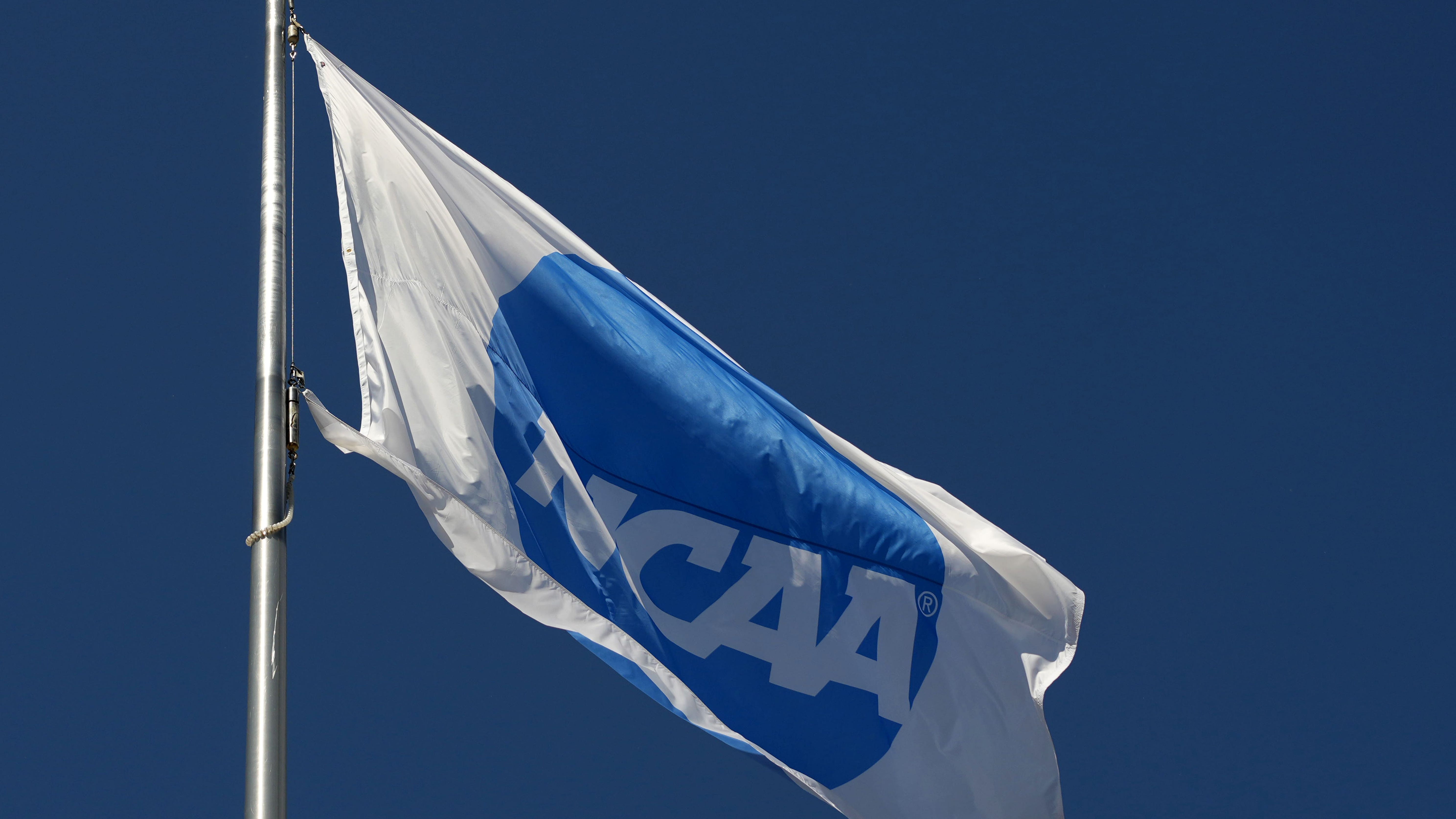
Latest on NCAA settlement that would allow revenue sharing for college athletes
USA TODAY Sports’ Steve Berkowitz discusses the latest on judge’s refusal to approve NCAA settlement that would allow revenue sharing for college athletes
Sports Pulse
- College athletes can now be compensated for their name, image, and likeness.
- The settlement covers athletes whose careers began between 2016 and Sept. 15, 2024.
A federal judge has granted final approval of a settlement of three antitrust cases addressing the compensation of college athletes Friday, ending a protracted legal debate and ushering in an extraordinary era that will allow NCAA member schools to directly pay their athletes.
According to the approval issued by U.S. District Judge Claudia Wilken in Oakland, California, schools will be able to compensate their athletes for the use of their name, image and likeness across all sports through an expected initial annual allotment of $20 million-$23 million per school, according to estimates. The changes are set to go into effect July 1.
The total allotment for NIL payments will be guided by a cap of 22% of the combined total of certain revenues of Power Five conference schools. The dollar amount is set to grow annually.
The agreement resolves lawsuits involving the NCAA, the Power Five conferences and lawyers for the plaintiffs by providing a 10-year settlement worth about $2.8 billion in damages, most of which is to be paid to compensate current and former athletes who were unable to participate in NIL contracts. Athletes whose college careers began between 2016 and Sept. 15, 2024, are eligible for compensation.
The damages money will come from the NCAA, which the largest share will come from the association’s central office via new revenue, cost savings and reserve funds. The remainder will come from reductions in NCAA distributions to Division I members, with roughly a quarter coming from members of the Power Five conferences.
During the process of the settlement approval, there were several objections to Wilken made in-person and in writing last month. It is expected there will be some of those objectors appealing her approval. An appeal must be made within 30 days of the decision.
NIL
Judge approves House v. NCAA settlement, allowing schools to pay college athletes
MENU ACCOUNT SECTIONS OTHER CLASSIFIEDS CONTACT US / FAQ Link 0
NIL
USC’s NIL success sparks envy and outrage, recruiting surge is about more than money
A lot of other fan bases appear to be heavily pocket watching USC. Instead of analyzing what their own recruiting efforts could be doing differently, it seems that with each opportunity that presents itself, there are a lot of efforts to dismiss anything positive that comes from the Trojan side. The latest comes as a […]
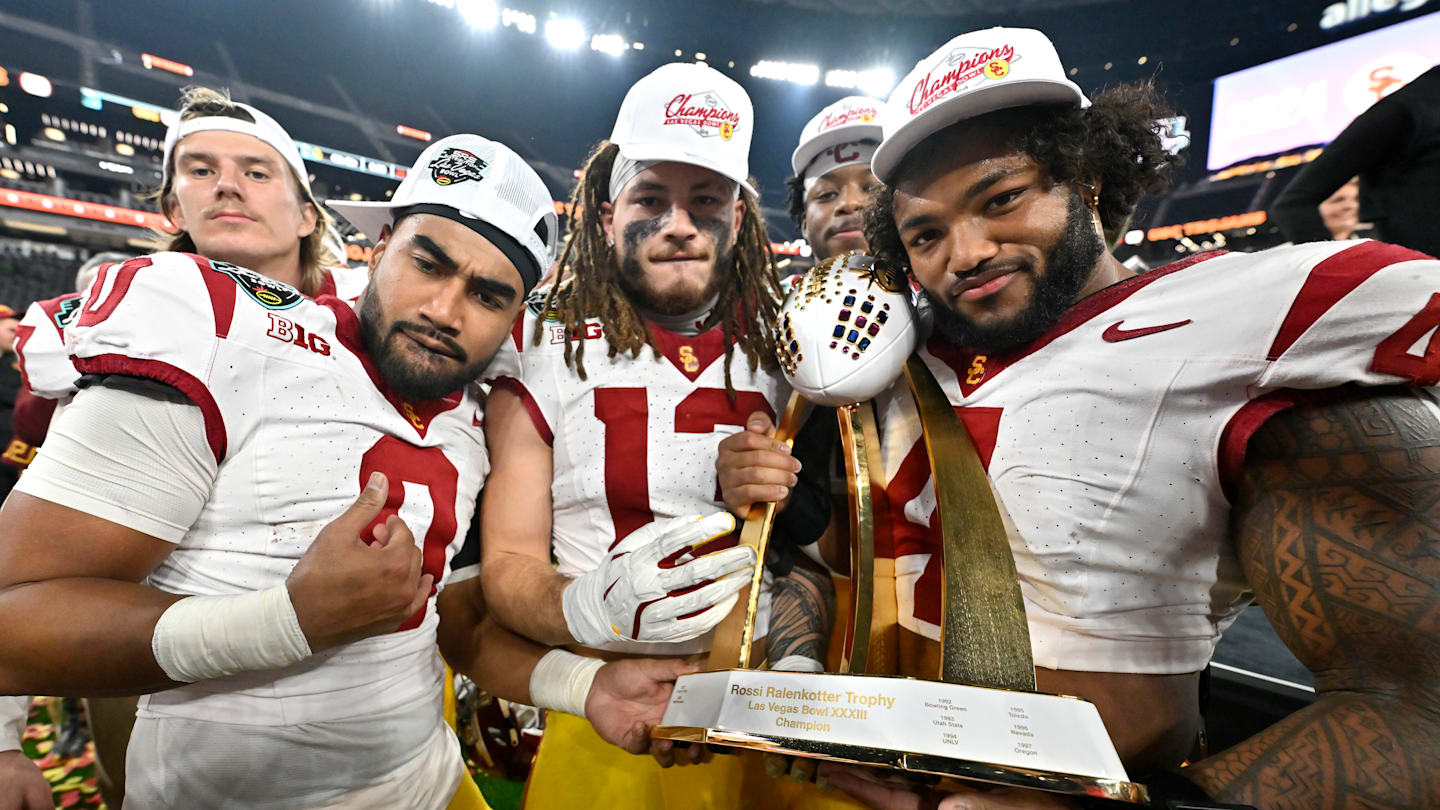
A lot of other fan bases appear to be heavily pocket watching USC. Instead of analyzing what their own recruiting efforts could be doing differently, it seems that with each opportunity that presents itself, there are a lot of efforts to dismiss anything positive that comes from the Trojan side.
The latest comes as a reaction to the latest USC commit, Mark Bowman, reportedly having NIL opportunities that can be in the range of $8-10 million for his estimated three years as a student-athlete. For some reason, these figures are drawing a lot of outrage throughout the college football nation.
Forget that the figures are a rough estimate and are taking all avenues into consideration over the course of three years. This news is seeing a lot of pearls being clutched, particularly among those fan bases who have enjoyed having a considerable advantage paying athletes, both since the inception of NIL and before it was actually allowed.
In earnest, it is not as if USC has handed Bowman or anyone a check for that amount before even stepping foot on campus as a player. This type of figure should instead highlight something that should have been known anyway.
The Trojans have a greater ability to pay student-athletes through the multiple avenues and what comes with being a part of the program. It is something of a complete mystery how people are disregarding how Los Angeles is the entertainment capital of the world and have simply not been as active or as well organized as they could have been in recent years.
All that is being reflected now is a return to the norm. Apparently that is too much of a bridge too far for others to not believe that some form of cheating or unabashed money waving is not going on.
Things are, in fact turning around at USC
What is nice about these allegations are two things. For one, it shows how worried the rest of college football is. Whether they wish to admit it or not, USC is simply following the currently agreed upon rules that all (allegedly) abide by.
More importantly, the baseless accusations are not at all what is leading to the latest recruiting successes or why many feel good about USC. Because the money aspect is a distant secondary talking point during the recruiting process, it will be clear soon enough that those who pledged themselves to join USC did so for more than a one-time big pay day.
NIL
Texas Tech Red Raiders – Official Athletics Website
LUBBOCK, Texas – Texas Tech Athletics is calling on Red Raider Nation to pack Rocky Johnson Field Saturday afternoon to welcome back the National Runner-Up softball program after its historic run at the Women’s College World Series. Gates will open at 1 p.m. Saturday with the Red Raiders expected to arrive by 2 p.m. at Rocky […]
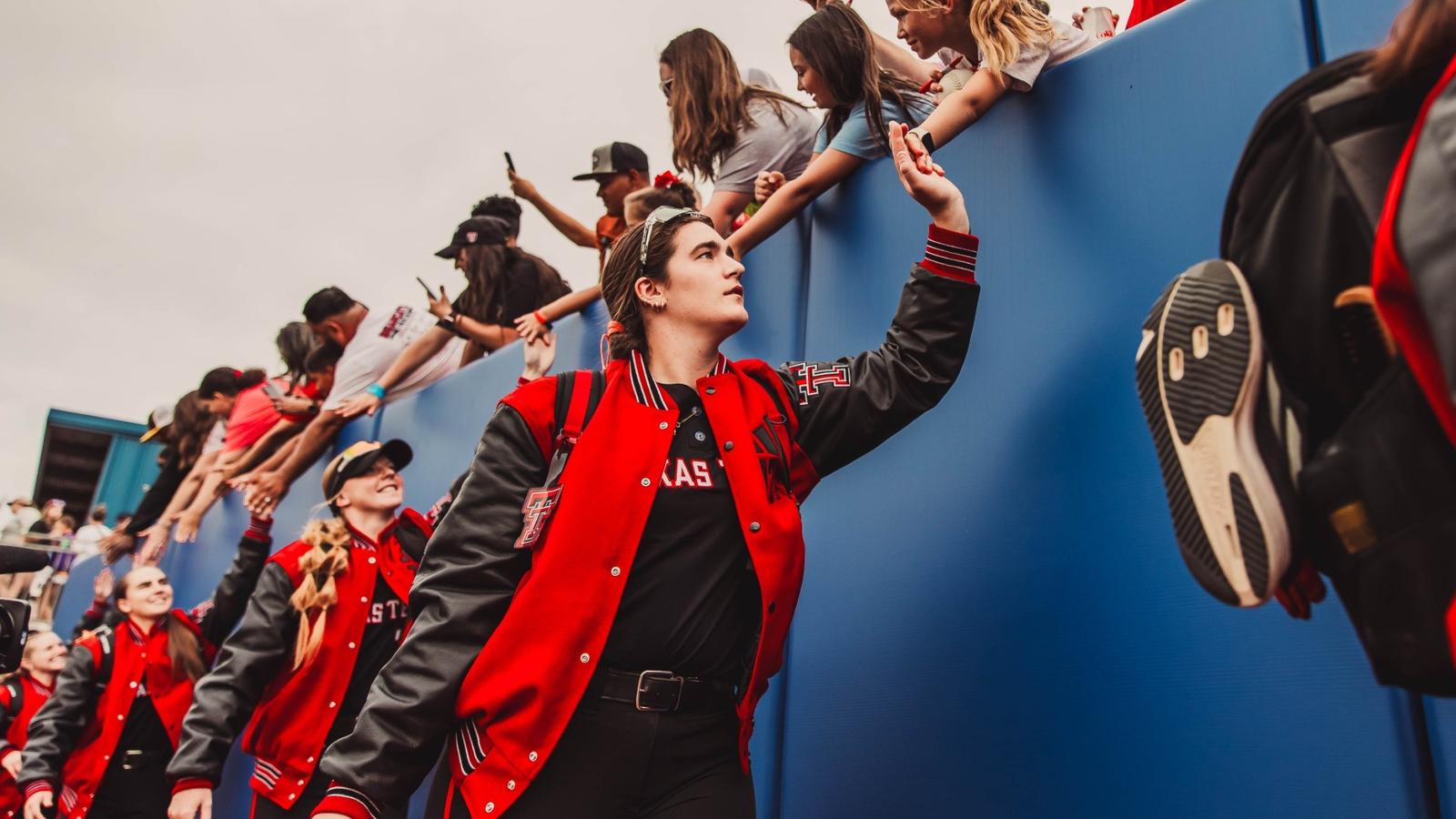
LUBBOCK, Texas – Texas Tech Athletics is calling on Red Raider Nation to pack Rocky Johnson Field Saturday afternoon to welcome back the National Runner-Up softball program after its historic run at the Women’s College World Series.
Gates will open at 1 p.m. Saturday with the Red Raiders expected to arrive by 2 p.m. at Rocky Johnson Field. Admission is free with parking permitted in the lots immediately surrounding Rocky Johnson Field.
The Red Raiders captured the nation’s attention this season during their historic run to the Women’s World Series, going from a bubble team a year ago to the peak of college softball in less than a calendar year. With only three returning players from a year ago, Texas Tech developed over the course of head coach Gerry Glasco‘s first season, eventually winning the Big 12 regular season and tournament titles before hosting the NCAA Regional round for the first time.
Texas Tech won 13 of its final 15 games to end the season, defeating two WCWS mainstays in UCLA and Oklahoma in the process, en route to advancing to the championship series against Texas. The historic season ended Friday night with a 10-4 loss to Texas in the deciding game of the WCWS championship series.
NIL
Texas Tech pitcher NiJaree Canady signs a second $1 million-plus NIL deal, AP source says
OKLAHOMA CITY (AP) — Texas Tech pitcher NiJaree Canady has signed another $1 million-plus NIL deal, a person with knowledge of the agreement told The Associated Press on Friday. The person spoke to the AP on condition of anonymity because they were not authorized to discuss the situation publicly. ESPN first reported the deal. “I’m […]

OKLAHOMA CITY (AP) — Texas Tech pitcher NiJaree Canady has signed another $1 million-plus NIL deal, a person with knowledge of the agreement told The Associated Press on Friday.
The person spoke to the AP on condition of anonymity because they were not authorized to discuss the situation publicly.
ESPN first reported the deal.
“I’m thrilled that a player of the caliber of NiJa Canady can take advantage of her success and her hard work that she’s given to the sport and given to the school that she’s at,” Texas Tech coach Gerry Glasco said after Texas claimed the national title with a 10-4 win over the Red Raiders in the decisive Game 3 of the championship series on Friday night.
News of the name, image and likeness deal broke hours before Canady was set to pitch in the final game. She lasted one inning and gave up five runs on five hits.
Canady signed a similar deal with Texas Tech last year after she had led Stanford to the World Series semifinals two straight years. She didn’t directly address either deal, but noted that her success has come with some negative attention as the sport has grown.
“I feel like more eyes are on the sport,” she said, “Of course, that comes with positives and negatives. There’s always like, negative attention that comes with it. But I feel like for the whole and just growing the sport and just giving younger girls something to look up to — it means a lot.”
Despite the rough finish, she led the nation in wins with 34 and threw every pitch in Tech’s first five World Series games. Glasco said her success and the exposure she has brought the school has made it all worthwhile.
“I’m not an expert,” Glasco said. “ Somebody could really do an in-depth study. But I have no doubt it (the first deal) would exceed a million dollars of value. I think it was of great value for our school.”
Glasco said there has been too much negative attention brought to the money Canady has earned.
“I found it almost insulting to her at times when I listened to broadcasts how much they talked about it because, like I said, I don’t hear it when we talk about — when we watch a men’s basketball game or a men’s football game, and to me that’s not right,” Glasco said. “That shouldn’t be that way.”
___
AP sports: https://apnews.com/sports
Copyright 2025 The Associated Press. All rights reserved. This material may not be published, broadcast, rewritten or redistributed without permission.
NIL
Tennessee plan to pay players revenue, NIL after House settlement approved
University of Tennessee athletes will be paid revenue directly by the school, beginning July 1, in addition to third-party income they already earn for use of their name, image and likeness. The revenue sharing era has officially arrived with approval of the House settlement on June 6, which resolved three federal antitrust lawsuits against the […]

University of Tennessee athletes will be paid revenue directly by the school, beginning July 1, in addition to third-party income they already earn for use of their name, image and likeness.
The revenue sharing era has officially arrived with approval of the House settlement on June 6, which resolved three federal antitrust lawsuits against the NCAA and four power conferences (ACC, Big Ten, Big 12, SEC).
Any NCAA member school opting into the revenue sharing format can pay its athletes up to an annual cap of approximately $20.5 million. That doesn’t include third-party NIL pay, which is still allowed.
This is a monumental shift in college sports, which moves even closer to a professional model as the NCAA and major conferences try to avoid further litigation.
Just like the NIL era, which began in 2021, UT will dive headfirst into revenue sharing. Here’s what UT fans need to know about this new system.
There’s a salary cap for each school
There will be a cap of approximately $20.5 million that a school can pay its athletes per academic year. It will be 22% of the average revenue from ticket sales, media rights and sponsorships by power conference schools. That cap will increase each year.
Schools determine which athletes are paid and how much, as long as the total doesn’t exceed the cap. Presumably, schools will spread revenue among several players, just like the payroll of a pro team.
Additionally, a player can earn as much NIL money as the market will pay, but those deals must withstand a new vetting process.
Here’s how Tennessee could divide revenue
UT has not disclosed its approach to revenue sharing. But it appears UT, like most SEC schools, will distribute the money according to revenue each sport produces.
A model was prescribed in the preliminary House settlement: Approximately 75% to football players, 15% to men’s basketball, 5% to women’s basketball and 5% to other sports (including baseball).
But for many schools like UT, those percentages will be calculated from an $18 million budget instead of $20.5 million, because $2.5 million will count toward new scholarships with increased roster limits. Extra scholarships should attract talented athletes to schools willing to fund them, especially in sports like baseball, soccer, swimming and track, among others.
That model for revenue distribution is just a baseline. Schools will adjust percentages based on need and different strategies, and conferences may set standards for each member school.
Why male, female athletes won’t be paid equally
Lawsuits are anticipated, arguing that revenue should be shared equally among male and female athletes based on Title IX principles for publicly funded universities. An appeal to the settlement on any grounds must be made within 30 days of the decision.
For now, most schools believe it’s riskier to violate guidance from the multibillion-dollar antitrust settlement than violating Title IX. Until there’s clear legal guidance, most schools will pay athletes based on the revenue their respective sport generates.
Also, President Donald Trump’s administration provided cover for that approach by rescinding former President Joe Biden’s Title IX guidance for paying college athletes.
Salary cap doesn’t include NIL
Athletes can still earn NIL money in addition to their share of school revenue. NIL income comes from businesses, boosters and third-party collectives. Revenue shares come directly from the university’s athletic budget.
The richest schools and boosters will utilize those two income streams to maximize player pay in a high-dollar arms race to build the most talented rosters.
However, a breaking point could be on the horizon. Athletic department revenue relies on donations and ticket sales. NIL collectives rely on money from those same boosters and fans.
Eventually, supporters could grow tired of paying athletes, especially through two different entities.
That means $20.5 million is the floor, not the ceiling
Because there is no limit on NIL, the estimated $20.5 million cap on revenue will be a starting point for player pay by the richest schools.
Imagine $15 million going to a football roster in revenue, and then another $10 million in NIL pay supplementing those same players. A few schools will lean on wealthy boosters to pull that off, but many others will reach their breaking point. Paying revenue to athletes will be difficult enough. After all, that money must be squeezed out of the athletic budget that was already in place. Tightening the belt could mean cutting sports that generate very little revenue, or reducing staff.
UT’s skyrocketing revenues put it in better shape than most, but every school will face hard decisions.
Tennessee opted in, but not every school will
Athletic department budgets have relied on this revenue for decades. Now they must share a good portion of it with athletes.
It becomes a simple equation: Either cut expenses or increase revenue, or both.
Tennessee gets a revenue bump from increased ticket prices, which includes a “talent fee” to aid in player pay. But there also will be budget cuts. That means Danny White, the Sports Business Journal’s Athletic Director of the Year, must manage UT’s money wisely.
Most power conference schools will opt into revenue sharing. Some mid-major schools won’t be able to afford it. They all have the option to spend well below the cap.
Tennessee athletes will be under contract
UT athletes will sign an agreement to receive a specific amount of revenue from the university, which must be offered and perhaps negotiated.
In theory, players under contract who enter the transfer portal would have to pay a buyout to the school or forfeit a portion of their revenue, but that’ll likely meet legal challenges. Almost every college sports rule has been tested in the courts.
Multi-year contracts especially would trigger buyouts, but it’s believed that those will go to only a few star players. After all, schools don’t want to commit to too many athletes over multiple years, and vice versa, at least not until the environment appears more stable.
Most revenue-sharing contracts will be one-year deals, at least until schools can settle into long-term strategies. That’s similar to scholarships, which are awarded each year and then routinely renewed.
Schools will try to hide player payroll from public
Schools don’t want media and fans to have access to their payroll. It would invite scrutiny and stir up disputes in locker rooms. That’s why Tennessee lawmakers have been preparing legislation that would keep secret that public money paid to college athletes, and other states are doing the same.
But there’s a reasonable argument that it should be available because athletes will receive money from public institutions. That battle over public records lies ahead.
There will be a cap management database to track how much schools pay players, but it’s still in development. It may track payments by sport or even position. Schools will have access to that data for their own budgeting purposes. But they’d like to keep it from public view.
NCAA won’t police player pay anymore
Power conferences are creating a new enforcement arm, the College Sports Commission, to ensure that schools abide by the athlete compensation rules, Yahoo Sports reported, including the revenue cap and NIL.
A new NIL clearinghouse will vet deals to determine if they are “legitimate, fair market NIL agreements and not being used for pay-for-play,” according to an NCAA memo sent to member schools on Feb. 13.
That could turn NIL into what it was intended to be: Businesses paying athletes for endorsements rather than common fans funding NIL payrolls. But that’s a difficult standard to define and uphold, so it’ll certainly face lawsuits.
Nevertheless, this means the NCAA will not police revenue sharing or NIL. Instead, the association will focus on eligibility and academic matters. It’s the next step in what appears to be an inevitable break between the power conferences and the NCAA structure.
Adam Sparks is the Tennessee football beat reporter. Email adam.sparks@knoxnews.com. X, formerly known as Twitter@AdamSparks. Support strong local journalism by subscribing at knoxnews.com/subscribe.
Get the latest news and insight on SEC football by subscribing to the SEC Unfiltered newsletter, delivered straight to your inbox.
-

 College Sports3 weeks ago
College Sports3 weeks agoPortal Update – Basketball and Gymnastics Take Hits
-

 College Sports3 weeks ago
College Sports3 weeks agoPortal Update – Basketball and Gymnastics Take Hits
-

 Professional Sports2 weeks ago
Professional Sports2 weeks agoJon Jones answers UFC retirement speculation as fans accuse champion of 'holding the belt …
-

 Health3 weeks ago
Health3 weeks agoBYU women's basketball guard injures ACL twice
-

 NIL2 weeks ago
NIL2 weeks ago2025 NCAA Softball Tournament Bracket: Women’s College World Series bracket, schedule set
-

 Youtube2 weeks ago
Youtube2 weeks agoXavier Legette taught Marty Smith his signature celly
-

 High School Sports2 weeks ago
High School Sports2 weeks agoToday in the MHSAA
-

 College Sports3 weeks ago
College Sports3 weeks agoIU basketball recruiting
-

 College Sports3 weeks ago
College Sports3 weeks agoNCDC Commitment Profiles: Cyclones’ Martins Moving On to Saint Anselm College • USPHL
-

 Motorsports2 weeks ago
Motorsports2 weeks agoWhy IHOP Rode With Dale Earnhardt Jr. In Amazon NASCAR Debut

















 ‘KAT ANSWERED THE CALL!’ – Perk | SportsCenter
‘KAT ANSWERED THE CALL!’ – Perk | SportsCenter



















